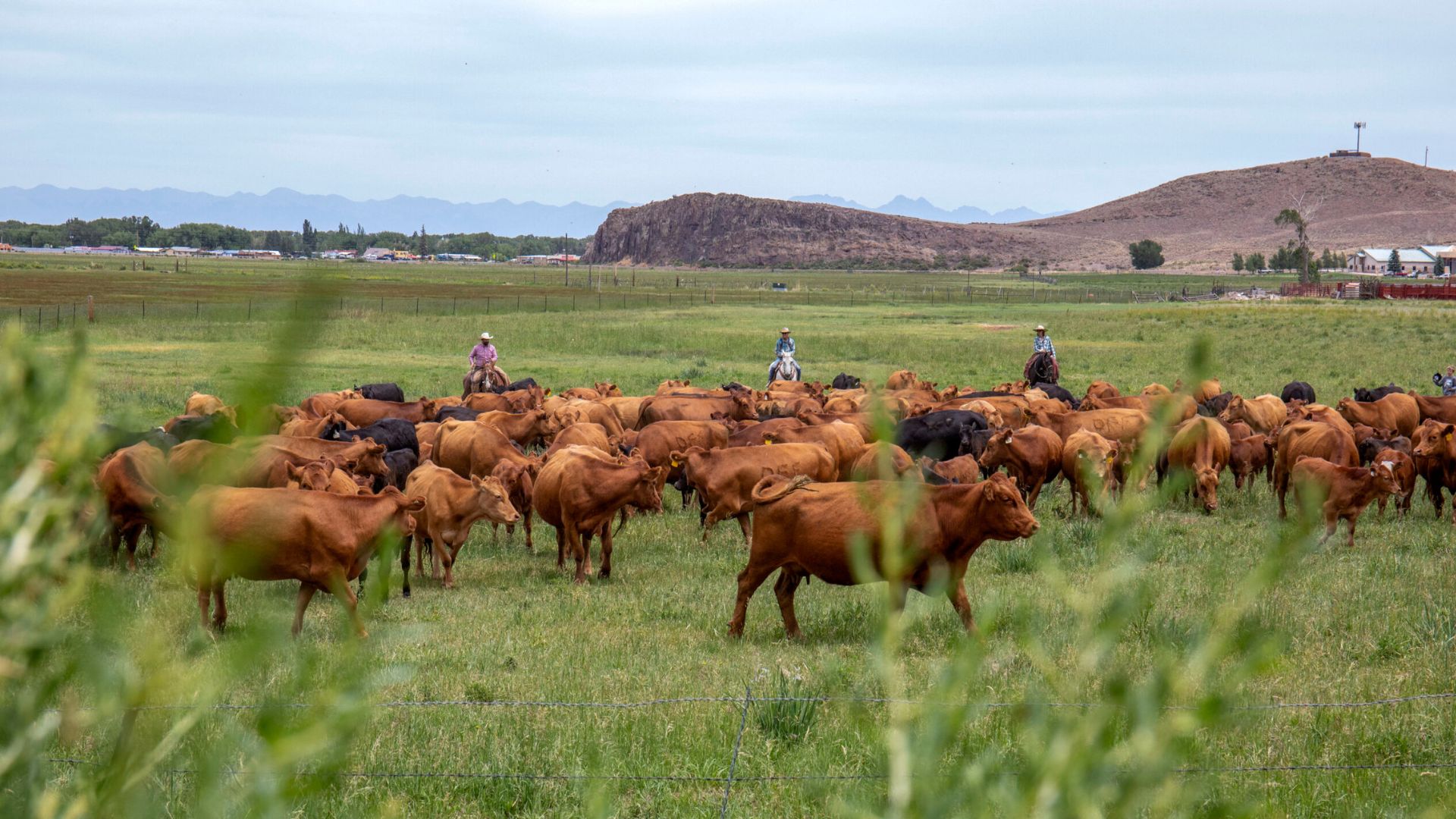New Mexico milk tests for bird flu reveal scientific mystery
This story was originally published at Source New Mexico, a NMPBS partner.

By Danielle Prokop
Veterinary experts nationwide have a variety of hypotheses for new and puzzling test results from cow milk being analyzed for avian influenza — including in New Mexico.
March marked one year since officials first reported Highly Pathogenic Avian Influenza — H5N1 — among dairy cattle. Since then, bird flu has infected 996 herds across the country, including 19 cases in the last month in California and Idaho.
New Mexico reported nine dairy herds in Curry County tested positive last April, and began milk testing its cattle in February following the rollout of a federal program.
The most recent results from milk-testing programs revealed that while more than 95% of the 93 cow herds in the state tested negative, a small set of inconsistent positives — all from three Curry County herds infected last year — remain, according to New Mexico State Veterinarian Samantha Holeck.
Enter the mystery: The cows themselves do not test positive, nor do they demonstrate the symptoms documented in the earlier avian flu outbreak, she said, such as huge drops in milk production.
“It’s been a real challenge to try to understand how it continues to circulate in some of these herds,” Holeck said.
New Mexico is partnering up with veterinarians in the U.S. Department of Agriculture to research the viral fragments found in the milk and sent samples to the federal National Veterinary Services Laboratories in Ames, Iowa.
“I know we’re a year into this situation now,” Holeck said, “but it seems like there’s still just so much to try to understand.”
New Mexico isn’t alone in experiencing the viral fragments, said Michael Payne, a food animal veterinarian at University of California, Davis, who noted there have been reports of similar persistent positives in quarantined herds there.
“I wouldn’t diminish the importance of it being small,” Payne said. “Yes, we’re talking about low levels of virus and yes, we’re talking about cows not getting sick, but it’s important that we’re not exactly sure where it’s coming from, and that in and of itself merits examination.”
He said more than $2 million dollars of research is being conducted in California on avian flu transmission across a dozen projects; including examining if it’s transmitted by flies; blowing in from dust storms; or carried by birds outside of waterfowl.
“It will be critical that we figure out how the disease is moving and how it’s changing,” Payne said.
‘Science is still very much in its infancy’
While scientists need to perform more research, Payne posited some possibilities for the detection of viral fragments: they could signify a different and less potent version of the virus; cooler weather might allow more viral fragments to survive in the bulk tanks, compared to the triple-digit temperatures in the fall; cows may have developed “herd immunity” against the virus.
“It could be that much smaller numbers of cattle are being exposed and are becoming infected, which has resulted in a much, much lower level of virus that’s being detected inside the bulk tanks,” Payne said. “It’s an area of active research.”
Veterinarian Andrew Bowman, a molecular epidemiologist at Ohio State University, said laboratory tests’ sensitivity could also be a factor: They may be picking up positives from environmental contamination in the tanks or on the farms.
“It doesn’t take much; we’re talking a few copies of the viral genome to be present in a sample to send it positive,” Bowman said. “We can pick up a positive that’s likely not a viable virus.”
Since the development of HPAI in cows is so new, as is the method of transmission — where the virus replicates in the mammary glands that produce milk — he said the basic questions of the interactions between the virus, the host and the environment still need answers.
“Science is still very much in the infancy of what we know about avian influenza in cattle,” Bowman said.
Offering reassurances
While scientists say it’s important to unravel the mystery of the viral fragments to better understand how the virus might change or spread in dairy cows, they also emphasize that risk to the public from avian influenza remains low.
The Centers for Disease Control and Prevention reports transmission of avian flu can occur from contact with milk from infected cows; eating, drinking or inhaling droplets contaminated with live virus; touching the live or dead bodies of infected animals. Thus far, the CDC has no documented human-to-human transmission. As of April 1, 70 people had contracted H5N1, mostly California farmworkers.
Most milk sold in the U.S. is heated to a temperature to kill bacteria and viruses, called pasteurization. The U.S. Food and Drug Administration tested milk products in 17 states and, finding no live viruses, reported that “pasteurization is effective at inactivating H5N1, and that the commercial, pasteurized milk supply is safe.”
Federal officials, however, warn that unpasteurized milk, also called raw milk, is unsafe to drink. Research from the National Institutes of Health in June using infected raw milk from New Mexico found that the H5N1 virus had survived for at least five weeks in refrigerated conditions. Further, mice that consumed the raw milk showed signs of illness, which researchers suggest indicates drinking raw milk can transmit the virus to other organisms.
Holeck emphasized that New Mexico milk is safe.
“For dairies, it’s standard routine if they have sick cows for any reason, not just [avian flu], that milk is always diverted out from the milk supply, it doesn’t enter commerce,” she said.
This story was originally published at Source New Mexico, a NMPBS partner.

